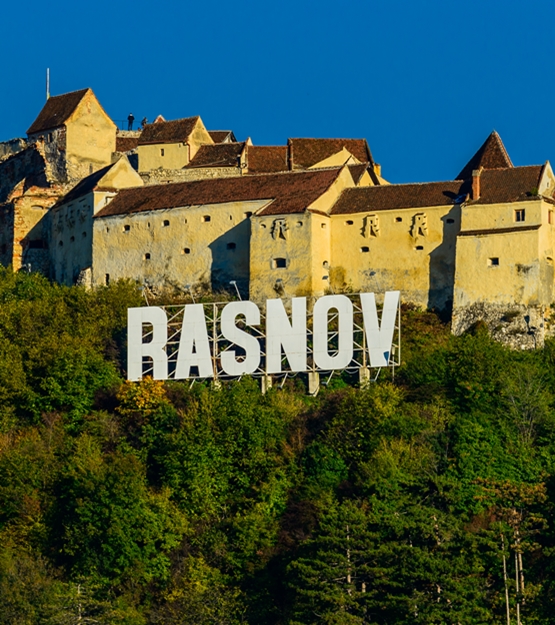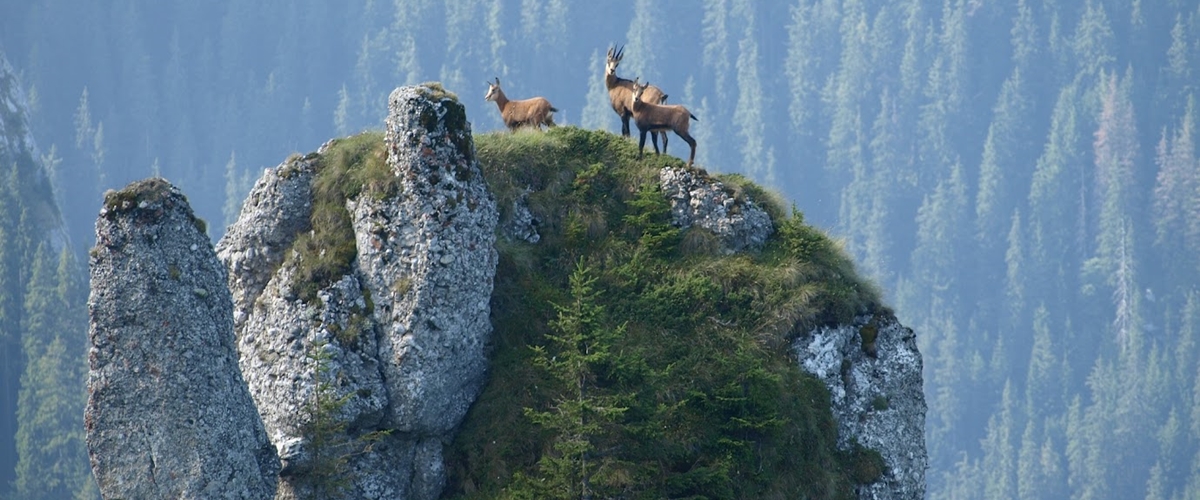The Piatra Craiului “King’s Rock” Mountains represents mainly a zipped limestone ridge stretched over 25km long, reaching 2238m height, widely regarded as one of Romania’s most beautiful sight. Wild animals as brown bears, wolves or lynxes roam through the forests, the higher slopes are rocky and majestic, and the lower ones are superbly cut into limestone gorges. It was declared Nature Reserve and National Park in 2003.
It’s natural richness comes from the limestone composition that forms the main ridge as well as from the flora and fauna elements, counting 1100 superior plant species (a third of the total Romanian species; out of them we find here 50 endemic plants for Romania and 2 for the place itself), 110 bird species (50 listed on Bern Convention), 270 species of butterflies, herbivorous and carnivorous species as the wolf, the bear or the lynx. We only mention here gorge residents as Wallcreepers, Black Redstarts and Alpine Swifts, then woodpeckers (Grey-headed, Black and Three-toed), Ural Owls or tiny Sombre Tits from the forests, 41 species of orchid, the endemic Carpathian Bellflower or the Alpine Lady’s Mantle.
The grade of the tour is ranked as “challenging hiking” - T3 from Swiss Alpine Club (see please http://de.wikipedia.org/wiki/SAC-Wanderskala): path not consistently visible. Sensitive places can be secured with ropes or chains. Ladders are possible. Maybe the hands are needed for balance. No snow glaciers, grassy slopes.
Departures: March - November
Duration: 5 days
PRIVATE TOUR: Private tour

As we drive to the mountains we take the option to visit 2 beautiful historical sights:
- Peles Castle, built in 1875 at Sinaia, a beautiful mountain resort surnamed “The pearl of the Carpathians. Property of the Royal Family, the castle has 160 rooms, opulently decorated with leather, ebony, walnut and mother of pearl, with invaluable collections of art and furniture; very modern also, the castle was equipped with electricity (the first from Europe), central heating, elevator, vacuum cleaner and theater (cinema from 1910) room, since the beginning.
- Bran Castle (known as “Dracula’s Castle”), important national monument and landmark of the Romanian tourism, due not only to the beauty of the Castle and the landscape but also to the legend of Count Dracula. Built in 1377, the castle’s fame came first from Dracula’s legend then from the affiliation with the Royal Family who received it in 1920, as a symbol of gratitude for Queen Marie of Great Romania contribution to the achievement of the Great Union from 1918.
Accommodation in 3* guesthouse.
-555-625.jpg)
Initially we go on a dirt road and then from Podul Magurii we take the path trough the forest; nice opening at Zanoagei meadows.
Optionally for today: a short climb to Piatra Mica peak (1hr) to have a beautiful view over Brasov Depression with Magura Codlei and Postavaru Mountain standing like two sentinels as well as a vision over the rest of the route we will take in the following days.
Accommodation at Curmatura Chalet (rooms with several beds, spring fresh water, outdoor restrooms).

Route on the summit.
The route takes the northern part of the mountain. After 1 – 1,5 hrs of climbing in the forest and then in the alpine area we reach Turnu Peak (1923m) which represents the N limit of the limestone ridge. From here we begin the summit travel to S, having the opportunities to admire the rolling hills of Rucar – Bran Corridor at E and the beautiful pyramidal crest of Papusa Massif from Iezer Mountains, which dominates the deep Dambovita Valley at W. The route is quite difficult with a lot of passing over peaks at 2000-2200 m height that challenges your physical capabilities.
Accommodation at La Om Refuge (mountain shelter - one single room, no water supply, no restrooms).

The route has two main parts: first we continue the southern path using the same approach as in the previous day, then we leave the ridge from Funduri Pass and descend continuously up to Brusturet Chalet, meeting place with the car; car transfer to the accommodation place.
Accommodation in 3* guesthouse.

We start the day driving through steep and narrow limestone walls of Dambovicioara Gorge, and then the large meandered road goes to Rucar – Bran Pass giving us the opportunity to admire on a side the Ridge of Piatra Craiului Mountains we just traveled through, then the massive block of Bucegi Mountains on the other side.
The rest of today is allocated to visit other important medieval sights from the region:
- Rasnov Fortress built about 800 years ago on a rocky hilltop, elevated at 150m above in the small town with the same name. The fortress is placed near the Bran Pass, a trade route connecting Wallachia with Transylvania. It is one of the biggest rural fortresses in the country and somehow unique in that it was meant to be a place of refuge for the commoners from sieges over extended periods of time. As such it had at least 30 houses, a school, a chapel, and other buildings more commonly associated with a village.
The inner rooms are looking more like a maze, with several wood ladders linking them and a few so-called secret passages which should keep you busy for quite a while.
Finally, the bonus: the view over the mountains, green fields and little brown dots - houses from the small surrounding villages is magnificent!
- Brasov, the Saxon’s Kronstadt (Town of the Crown), the jewel of the German minority attracts with the largely Baroque area coiled beneath Mount Tampa and Mount Postavaru – old city. Visits to the Black Church – the biggest Gothic church from Southeast Europe houses a priceless collection of Oriental rugs as well as a 4000-pipe organ., the Council Square, the Franciscan Monastery, the Central Park, the Black and White Towers, Ecaterina’s Gate, Schei Gate and the Rope Street (the narrowest street in Europe).
Arriving to Bucharest in the evening.
600 EUR/pers (for a group of min. 6 persons travelling in minivan)
*for less people traveling together, the price will be revised
- Professional guide assistance, English speaking (or other languages upon request), during the whole trip;
- Transport by private modern AC car/mini-van (fuel and parking fees incl);
- 4 nights accommodation, breakfast included, in 3* and 1* mountain chalets;
- Entrance fees to the touristic attractions included in the itinerary;
- Photography fee;
- Meals, other than those mentioned in the itinerary;
- Other expenses (such as souvenirs, room service and so on);
We offer you a full range of touristic services as transportation, airport - hotel transfers, accommodations, guides, drivers, rental cars, flight tickets, meals reservations, sports events or concerts tickets.
We handle groups and individuals.







.png)
.png)



